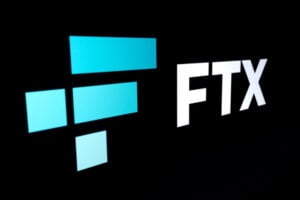FTX, the cryptocurrency platform that failed in 2022, will begin to reimburse its main creditors starting from May 30, 2024, with a fund of 11.4 billion dollars in cash raised during the Chapter 11 bankruptcy procedure under U.S. law.
The announcement was made official by the bankruptcy lawyer Andrew Dietderich, during the latest hearing before the competent court.
This operation represents a crucial moment for the victims of the scandalo FTX and marks a significant turning point in the long and complex procedure of risanamento post-crisi.
FTX: a post-bankruptcy recovery for creditors of 11.4 billion dollars
Since the declaration of bankruptcy in November 2022, FTX has promoted a complex process of recovering its resources, reaching a total availability of 11.4 billion dollars in cash. This result was made possible thanks to:
- Liquidation of residual assets
- Sale of FTX group subsidiaries (such as FTX Japan and LedgerX)
- Settlement agreements and recoveries from legal proceedings
- Reduction of operating expenses under the management of the new management
According to the official documents, the majority of the funds do not come from the original crypto assets, but from conversions into cash, carried out during the detention period by the bankruptcy administration.
FTX: start of reimbursements to main creditors
The reimbursement to the main creditors will officially begin on May 30, according to what was communicated by the FTX legal team. This category includes entities with high financial exposures towards the platform, including likely institutional funds, exchange partners, or high-profile investors.
Although the details on the per capita amount returned have not yet been released, the availability of funds suggests that the reimbursement percentage could be significant, even if not total compared to the claimed credits.
Refunds already initiated for minor creditors
In parallel with the central phase of the repayment plan, FTX has already begun to settle the positions of the so-called minor creditors, holders of “convenience claims” — that is, compensation claims below a certain amount (generally a few thousand dollars).
These payments, easier to verify and administer, represent a first tangible sign of the effectiveness of the recovery plan and contribute to rebuild trust among the most vulnerable stakeholders of the ecosystem.
A quick timeline of the FTX case
- November 2022: FTX announces the blocking of withdrawals and files for bankruptcy Chapter 11
- December 2022: Sam Bankman-Fried is arrested and subsequently extradited to the USA
- 2023: liquidation of assets, sale of subsidiary companies, collaborations with federal authorities
- Start of 2024: preliminary approval of the repayment plan
- May 30, 2024: start of reimbursements for the creditori principali
The procedure was managed according to the Chapter 11 of the U.S. Bankruptcy Code, which allows companies to restructure their debts instead of proceeding to a total liquidation. Unlike the more radical Chapter 7, this form provides greater flexibility in the redistribution of assets and in negotiating with creditors.
The new judge presides over the periodic hearings related to the supervision of the plan, while the legal and accounting team appointed by the current administration continues to work in synergy with the US authorities, including the SEC (Securities and Exchange Commission) and the Department of Justice.
Future prospects: what happens now?
The reimbursement for the main creditors is just one of the steps outlined in the executive plan. The coming months will be crucial to complete:
1. The verification of credits still pending
2. The execution of international payments
3. The possible distribution of additional funds, if available
4. The formal closure of the bankruptcy procedure
A future reopening of the platform in another form is also not ruled out, a hypothesis evaluated in 2023 and then set aside to focus on compensations.
Comparative analysis: what the FTX case teaches us
The FTX affair is situated within the realm of grandi fallimenti crypto, alongside Mt. Gox, Celsius, Voyager, and BlockFi. Among these, FTX stands out for its tempestività relativa in presenting a concrete reimbursement plan, supported by liquid funds, a rare element in the crypto context.
The comparison with Mt.Gox is emblematic: while the former users of Mt. Gox have been waiting for over 10 years, FTX has already arranged refund phases in less than two years since the collapse.
The main lesson seems to be the importance of governance, fund segregation, and operational transparency in the new digital business models.
A precedent that weighs on the future of the sector
The rimborso FTX plan shows that, with more transparent and structured management, even an apparently irreversible crisis can be managed efficiently. However, the strong reputational impact suffered by the entire crypto ecosystem remains, which now awaits ulteriori sviluppi normativi to prevent similar situations in the future.
The FTX case continues to be monitored by global financial authorities, the media, and investors as a testing ground for the regulation of crypto platforms, the protection of users, and the effectiveness of existing bankruptcy laws.
With the start of refunds beginning on May 30 and the allocation of 11.4 billion dollars in cash, FTX enters one of the decisive phases of its recovery path. Although the wound inflicted on investors cannot be completely healed, this step could represent the beginning of a new phase of responsibility in the world of cryptocurrencies.
It remains to be seen whether the previous FTX will help build a more transparent, secure, and regulated sector or if it will be remembered only as one of the biggest financial scandals of the digital era.


